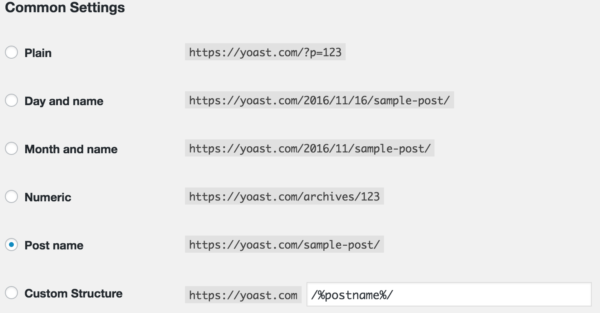Why you should change your WordPress permalink structure

In the past we’d frequently recommend people change their permalink structure. In this post, we’ll explain why you should consider changing your permalink structure and how to go about it.
Notice!
Don’t change your permalinks if your site has been around for a while. Messing with your permalinks if you have a lot of content, redirects et cetera can lead to many issues.
Please be careful!
Why change your WordPress permalink structure?
A common thing we see in permalink structures are the usage of dates. For websites that post content that is related to current events, such as news sites, this makes perfect sense. However, for most blogs, the content is usually “timeless” as it tends to cover subjects that don’t relate to a specific date in time.
Using dates in your permalink structure also tends to have another side-effect, namely a lower CTR for older posts that may very well still be relevant. Whenever someone sees a result in Google with a date pointing back two years ago, they’ll be less likely to click that result. Seeing as Google uses this CTR for page rankings, it might be a very good idea to change your permalink structure to something more appealing to your visitors! If you want more information, you should read our post on WordPress SEO URL / Permalink considerations.
Changing the WordPress permalink structure
There are two steps in changing your WordPress permalink structure. The first step is easy: go to Settings -> Permalinks and select Post name. We explain how to change your permalink structure in more detail in this article.

But what about all those old posts that still have dates in their permalink? With this handy tool, you can easily have a redirect generated that can be placed in your .htaccess file. This will point posts using the old permalink structure, to the new one.
Please note that the tool currently only supports Apache-based servers and not Nginx.
After copying the redirect over to your .htaccess file, you should go out and test if everything is working properly. If the redirect doesn’t seem to be working, it could mean that you’re not allowed to use RedirectMatch on your Apache server.
If you don’t have the proper rights to edit your .htaccess file or can’t use RedirectMatch, you can also consider using our Yoast SEO Premium plugin. It cannot redirect all your posts at once if you change the permalink structure, but it will automatically create a redirect for you whenever you alter the permalink of a post.
If you decide to change your existing permalinks, please beware of two things:
- You should always test this in a staging environment. You don’t want to mess this up on your production site!
- You will lose the social shares you’ve had for those URLs.
Read more: WordPress SEO: the ultimate tutorial »

Discussion (22)